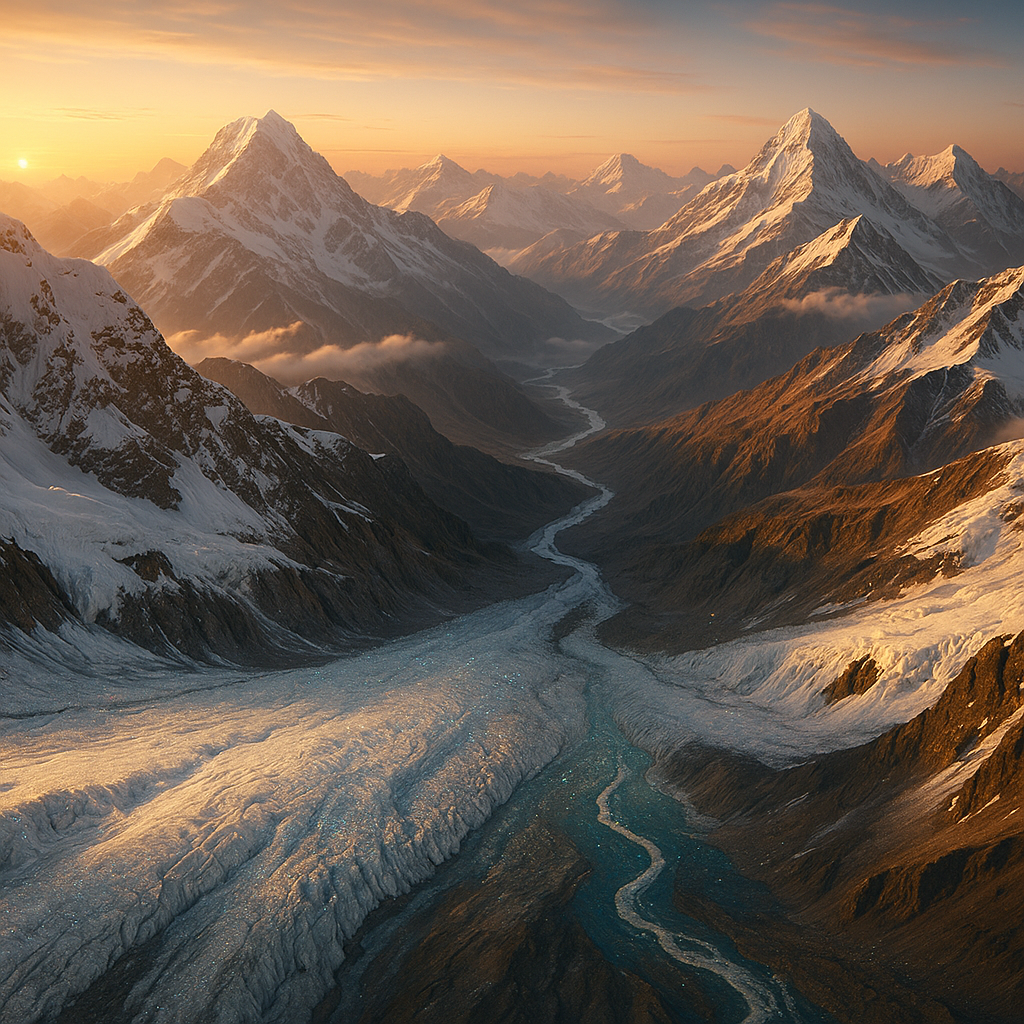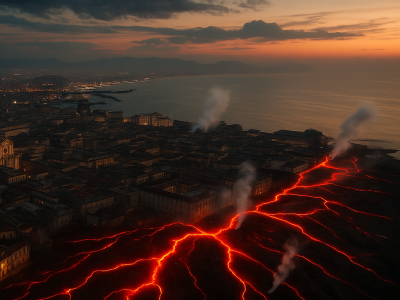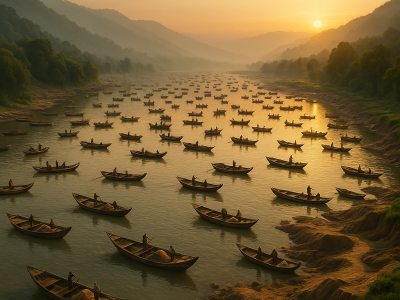In the early morning stillness of the Himalayas, the ice crunches underfoot. Towering peaks shine in the first light. A place where the air feels pure and ancient. Yet, under a microscope, what emerges from the snow is shocking. Tiny bits of plastic, fibres from fleece jackets, particles from tyres, fragments from bottles, all embedded in the glaciers and rivers that feed nearly two billion people downstream.
This is the unsettling reality revealed by a new study led by Shahid Ahmad Dar from the National Institute of Technology Srinagar, in collaboration with the Durban University of Technology. Published in the Journal of Hazardous Materials, the research offers the first comprehensive look at microplastic pollution across glaciers in the Hindu Kush Himalayas. The findings raise urgent questions about the health of Asia’s water tower and the people who depend on it.
Why the Hindu Kush Himalayas matter
Stretching across eight countries from Afghanistan to Myanmar, the Hindu Kush Himalayas (HKH) hold the largest concentration of glaciers outside the polar regions. This vast mountain system, often called the Third Pole, is the source of ten major Asian rivers, including the Ganges, Brahmaputra, and Indus. Its meltwater sustains nearly a quarter of humanity.
For centuries, the region’s remoteness offered a degree of protection from industrial pollution. But globalisation, tourism, climate change, and inadequate waste management have left their mark. As Dar notes, even at altitudes above 4,000 metres, microplastics are present in alarming quantities.
From city streets to mountain peaks
Microplastics are plastic particles smaller than 5 millimetres. They come from the breakdown of larger plastics, synthetic clothing fibres, microbeads in cosmetics, and tyre dust. While much attention has been on ocean pollution, this study shows that atmospheric transport is carrying microplastics thousands of kilometres from urban centres to high-altitude snowfields.
Fibres dominate the pollution profile, often originating from clothing worn by trekkers and climbers. Long-range winds lift particles from densely populated areas such as the Mediterranean region and Indo-Gangetic Plain, depositing them onto ice and snow.
What the researchers found
Dar and colleagues collected samples from glacier ice, snow, the surrounding air, and falling dust in areas such as Thajwas, Kolahai, and Harmukh. They discovered surprisingly high amounts of these plastics, with some glaciers containing up to 151,000 particles in just one cubic metre of ice or snow. Most of the particles were fibres, like those shed from clothing, and were made from common materials such as polyester, nylon, and polystyrene.
The study also found that these plastics don’t just come from local activities like tourism, camping, and livestock grazing. Using computer models, the researchers showed that about three-quarters of the pollution is blown in from faraway places around the world, carried by winds over thousands of kilometres.
The group reviewed over 100 peer-reviewed studies from across the HKH. They documented microplastics in river water, lake sediments, glaciers, shoreline deposits, air samples, and even fish. Concentrations varied dramatically depending on location and proximity to human activity.
In the Buqu River in Tibetan Plateau, levels reached over 967 particles per cubic metre. Indian lakes like Nainital recorded up to 5,500 particles per kilogram of sediment. Even Mount Everest’s glaciers contained microplastics, with concentrations as high as 871 particles per litre of melted ice.
Polypropylene (PP), polyethylene (PE), and polystyrene (PS) were the most common polymers identified. Many are used in packaging, textiles, and fishing gear products that persist for decades in the environment.
Melting glaciers, melting time
Microplastics are not just an aesthetic problem. They can alter the albedo of ice, reducing its reflectivity and causing it to absorb more heat. This speeds up glacier melt, already accelerated by rising temperatures. Faster melting affects river flows, increases the risk of floods, and threatens long-term water security for millions.
The study points out that microplastics can remain trapped in ice for decades, only to be released during seasonal melts. As glaciers retreat, these stored pollutants are flushed into rivers and lakes, further contaminating downstream ecosystems.
A silent threat to ecosystems and health
Fish, invertebrates, and other aquatic life often mistake microplastics for food. Ingested particles can block digestive tracts, reduce feeding efficiency, and cause internal injuries. They also act as sponges for toxic chemicals such as heavy metals and persistent organic pollutants, which can accumulate up the food chain.
In the HKH, where fishing remains an important livelihood and protein source, this contamination poses both ecological and economic risks. The researchers highlight the absence of data on microplastic levels in local crops, livestock, and drinking water, a critical knowledge gap given the region’s dependence on glacial meltwater.
Why current monitoring falls short
Current monitoring of microplastic pollution in the Himalayan cryosphere is limited both spatially and methodologically. The paper identifies a major challenge: lack of standardised methods for sampling and analysing microplastics. Different studies use varying mesh sizes, density separation solutions, and filtration techniques, making comparisons difficult.
For instance, some sampling nets fail to capture particles smaller than 300 micrometres, missing a substantial portion of pollution. Some density separation solutions cannot isolate heavier plastics like PET or PVC. Without consistent protocols, policymakers lack reliable data to guide interventions.
Tourism and plastic footprints
Tourism is both an economic boon and an environmental burden for the Himalayas. Each year, millions of pilgrims, trekkers, and climbers bring in tonnes of plastic in the form of packaged food, bottled water, and outdoor gear. Waste management infrastructure at high altitudes is minimal, and much of the litter ends up abandoned.
Dar’s team points out that even synthetic fibres shed from outdoor clothing contribute significantly to microplastic loads. Combined with road construction, urban expansion, and agricultural plastic use, these local sources add to the transboundary pollution arriving on the wind.
Future research on microplastics in glaciers is essential to address existing knowledge gaps and understand their broader environmental impacts. A key priority is large-scale, long-term monitoring of microplastics and nanoplastics across multiple glacier systems to assess spatial and temporal variations. Further standardized sampling and analytical techniques are needed to ensure comparability among results and regions. Future research should focus on the degradation and transformation of microplastics and nanoplastics under extreme glacial conditions, including their interactions with UV radiation, temperature fluctuations, and cryoconite ecosystems.
Policy pathways and community action
The study calls for a regional monitoring network coordinated through organisations like the International Centre for Integrated Mountain Development (ICIMOD). Standardised methods, data sharing, and cross-border collaboration could help track pollution trends and evaluate interventions.
Policy recommendations include banning single-use plastics in sensitive areas, creating waste buffer zones around key water bodies, and incentivising eco-friendly tourism. Public awareness campaigns targeting both visitors and local communities could shift behaviour.
The findings arrive as governments prepare for the next UN Environment Assembly, where plastic pollution is high on the agenda. Negotiations for a global treaty on plastics are under way, and the HKH could serve as a case study in why remote ecosystems must be included in binding agreements.
Meanwhile, climate reports warn that Himalayan glaciers could lose up to two-thirds of their volume by the end of the century. If microplastics accelerate melting, the timeline for water scarcity across South and East Asia could shorten dramatically.
What can be done now
While international policy takes time, immediate steps are possible:
- Equip trekking routes with waste collection points.
- Require tourists to carry out what they bring in.
- Train local guides in waste management and environmental education.
- Support research into biodegradable gear suitable for high-altitude use.
These measures, while modest, could slow the tide of microplastics in one of the planet’s most important water reserves.
The image of the Himalayas as a pristine wilderness is fading. As Dar’s research makes clear, even the most remote glaciers are connected to the rest of the world through the invisible threads of air and water. The HKH is both a victim of global pollution and a warning signal for what is to come if microplastic management continues to lag behind production.
References
Dar, S. A., & Gani, K. M. (2025). Microplastic pollution in the glaciers, lakes, and rivers of the Hindu Kush Himalayas: Knowledge gaps and future perspectives. Science of the Total Environment, 976, 179304. https://doi.org/10.1016/j.scitotenv.2025.179304
Dar, S. A., & Gani, K. M. (2025). Deciphering the source contribution of microplastics in the glaciers of the North-Western Himalayas. Journal of Hazardous Materials, 491, 137975. https://doi.org/10.1016/j.jhazmat.2025.137975







